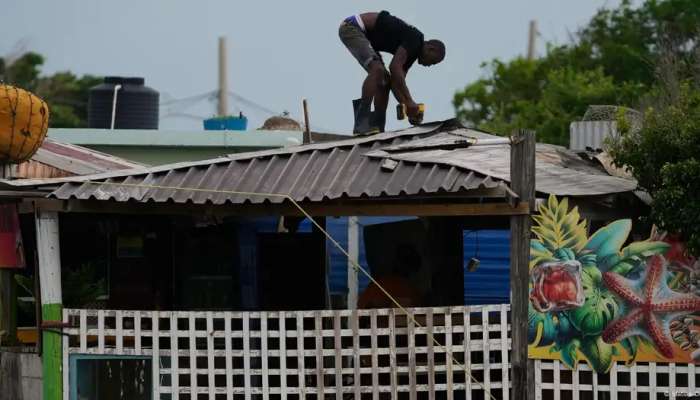
Kingston: In its latest advisory, the US National Hurricane Center said Melissa is expected to "bring catastrophic and life-threatening winds, flooding and storm surge to Jamaica on Tuesday."
The Monday advisory, issued at 11 p.m. Eastern Daylight Time (0300 GMT/UST), showed Melissa at some 240 kilometers (140 miles) southwest of Jamaica's capital, Kingston and moving at 2 miles per hour directly at Jamaica.
Slow-moving hurricanes are considered particularly destructive because they linger over a region for a longer period.
Maximum sustained winds are 175 miles per hour with gusts of up to 215 per hour.
The advisory said that as well as Jamaica, a hurricane warning is in effect for several provinces of Cuba and the southeastern and central parts of the Bahamas.
Usain Bolt reposting Hurricane Melissa information
Jamaican sprint superstar Usain Bolt has been reposting disaster preparedness information on X, such as emergency contact numbers and safety tips on dealing with Hurricane Melissa.
The 8-times Olympic gold medalist has 4.6 million followers on the social media platform.
Jamaica PM
In an interview with CNN, Jamaica's Prime Minister Andrew Holness warned on Monday that Hurricane Melissa, which exploded into a Category 5 cyclone, could devastate western Jamaica if it hits the region at full force.
Melissa "is likely to turn north, so that means it could have an impact on our shores, more to the western end of Jamaica," said Holness.
"And if that were to happen, and I've said it before, I don't believe there is any infrastructure within this region that could withstand a Category 5 storm, so there could be significant dislocation," he added.
Some Jamaicans refuse to evacuate for Hurricane MelissaMandatory evacuations were issued for flood-prone areas in Jamaica, with buses transporting residents to safe shelters.
Government official Desmond McKenzie announced that storm shelters across the island had been opened and urged citizens to heed evacuation warnings.
"This is one bet you cannot win. You cannot bet against Melissa," he warned.
Still, some residents chose to remain in their homes.
"My only worry is flooding because we live close to the sea," said Hyacinth White, who said she had no intention of moving to a shelter.
Officials expressed concern that fewer than 1,000 people were using the more than 880 shelters available across the country.
"It's way, way below what is required for a Category 5 hurricane," said Daryl Vaz, Jamaica's transport minister, who urged people "to be smart ... If you are not, unfortunately, you will pay the consequences."
Noel Francis, a 64-year-old fisherman from the southern town of Old Harbor Bay, said, "I hear what they're saying, but I'm not leaving. I can take care of myself."
Meanwhile, several towns along Jamaica's southern coast reported power outages as winds strengthened overnight.
Why is Hurricane Melissa moving at a slow speed an issue?
Melissa has a worryingly slow pace. At just around three miles (4.8 kilometers) per hour, it's below an average person's walking speed.
That means impacted areas could experience punishing conditions for a much longer duration than a hurricane that passes by more quickly.
"Tens of thousands of families are facing hours of extreme wind gusts above 100 mph (160 kmh) and days of relentless, torrential rainfall," said AccuWeather Chief Meteorologist Jonathan Porter, adding infrastructure damages could hamper the arrival of aid.
"Slow-moving major hurricanes often go down in history as some of the deadliest and most destructive storms on record," he added. "This is a dire situation unfolding in slow motion."
Forecasts predicted as much as 40 inches (around one meter) of rain, with deluges likely to cause flash floods and landslides across Jamaica, Haiti, and the Dominican Republic.
"This extreme rainfall potential, owing to the slow motion, is going to create a catastrophic event here for Jamaica," said the US National Hurricane Centre Deputy Director Jamie Rhome.